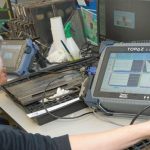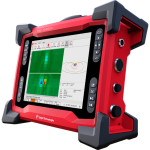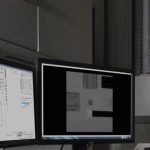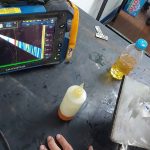There are several reflector types commonly used as a basis for establishing system performance and sensitivity. Included among them are spheres and flat-bottom holes (FBH), notches, side-drilled holes (SDH), and other special purpose or designs. Table 1 summarizes these reflectors characteristics and uses.

- Spherical reflectors are used most often in immersion testing for assessing transducer sound fields. Spheres provide excellent repeatability because of their omnidirectional sound wave response. The effective reflectance from a sphere is much smaller than that received from a flat reflector of the same diameter due to its spherical directivity pattern.
- Flat reflectors are used as calibration standards in both immersion and contact testing. They are usually flat-bottom drilled holes of the desired diameters and depths. All flat reflectors have the inherent weakness that they require careful sound beam-reflector axis alignment. Generally, if a discontinuity echo amplitude is equal to the amplitude of the calibration reflector, it is assumed that the discontinuity is at least as large as the calibration reflector.
- Notches are frequently used to assess the detectability of surface-breaking discontinuities such as cracks, as well as for instrument calibration. Notches of several shapes are used and can either be of a rectangular or V cross-section. On piping, they
may be located on the inside diameter and/or the outside diameter and aligned either in the longitudinal or transverse directions. - Side-drilled holes are placed in calibration blocks so that the axis of the hole is parallel to the entry surface. The sound beam impinges on the hole, normal to its major axis. Used in sets with differing distances from the surface and different diameters, side-drilled holes are frequently used for developing distance-amplitude correction curves and for setting overall sensitivity of shear wave testing schemes.









